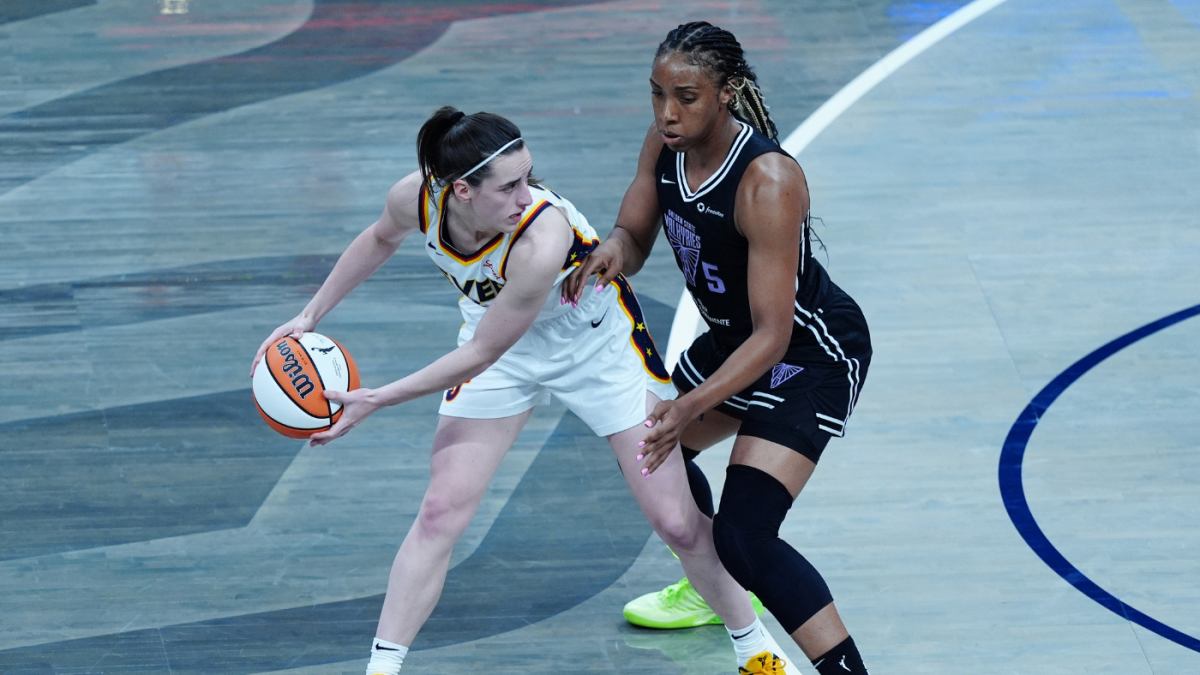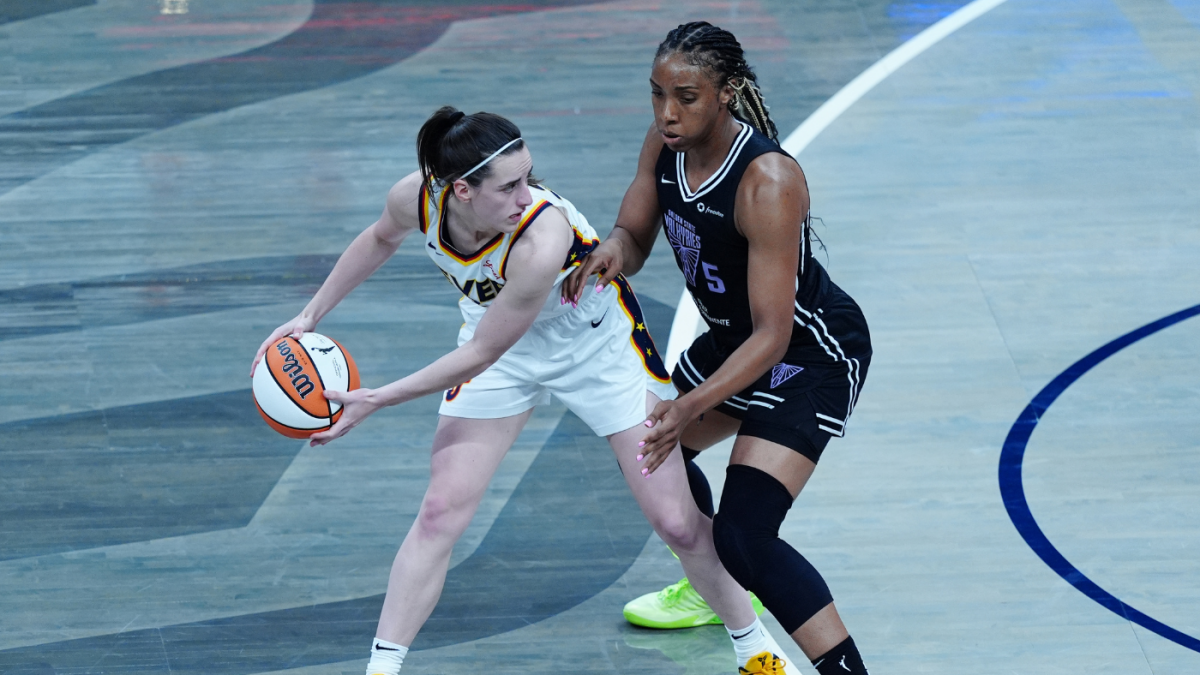The world of women’s basketball witnessed a pivotal moment when Caitlin Clark, the electrifying star of the Indiana Fever, faced off against the Golden State Valkyries. Her return from injury was highly anticipated, but the outcome was far from what many expected. Instead of a triumphant comeback, the game became a masterclass in defensive strategy by the Valkyries, showcasing how a well-coordinated team can neutralize even the most brilliant individual talent. This victory was not just a win for Golden State; it was a statement that could reshape the landscape of the WNBA.
Clark’s impact on the league is undeniable. Her shooting range, court vision, and competitive spirit have revitalized women’s basketball, drawing new fans and energizing the sport. However, the Valkyries presented a formidable challenge, one that exposed vulnerabilities in Clark’s game. In her return match, she scored just 10 points on 4-of-12 shooting, a stark contrast to her usual dominance. Earlier in the season, the Valkyries had already held her to a season-low 11 points, demonstrating a clear ability to disrupt her offensive rhythm. The Fever’s struggles extended beyond Clark, as the team failed to find consistent scoring outside of their star player, resulting in their second-lowest point total of the season. This performance highlighted the Valkyries’ defensive prowess and raised questions about the Fever’s offensive strategy.
The Valkyries’ success against Clark was not accidental; it was the result of a carefully crafted defensive plan executed with precision. Several key factors contributed to their effectiveness:
Physicality as a Disruptor: The Valkyries’ coaching staff recognized that Clark is vulnerable to physical play. They implemented a strategy of constant pressure, forcing her to fight for every inch of space. Defenders like Veronica Burton aggressively contested Clark’s shots, disrupted her passing lanes, and made her uncomfortable. This physicality extended beyond individual matchups, creating a defensive environment that limited Clark’s effectiveness.
Denying the Three-Point Line: Clark’s three-point shooting is a significant weapon in her arsenal. The Valkyries prioritized denying her open looks from beyond the arc, forcing her to drive into the paint where their help defense could converge. In the game in question, Clark went 0 for 7 from three-point range, underscoring the effectiveness of this strategy. By limiting her long-range attempts, the Valkyries neutralized one of her most potent offensive weapons.
Help Defense and Rotations: The Valkyries didn’t rely solely on individual defenders to contain Clark. They employed a sophisticated system of help defense and rotations, ensuring that Clark was constantly facing multiple defenders. When she drove to the basket, help defenders would collapse on her, forcing her to pass or attempt contested shots. This team-oriented approach minimized her scoring opportunities and forced turnovers, demonstrating the power of collective defense.
Kate Martin’s Impact: Kate Martin, a key expansion draft pick for the Valkyries, has been instrumental in their success against the Fever. Her familiarity with Clark from their college rivalry gives her a unique understanding of Clark’s tendencies and weaknesses. Martin’s defensive instincts and basketball IQ allow her to anticipate Clark’s moves and disrupt her offensive flow, making her a crucial piece of the Valkyries’ defensive puzzle.
Burton’s Tenacity: Veronica Burton’s performance was a standout in the game. She not only disrupted Clark on defense but also contributed significantly on offense with 21 points. Her ability to impact both ends of the court makes her a vital component of the Valkyries’ success. Burton’s tenacity and versatility exemplify the team-first mentality that has driven the Valkyries’ dominance.
While the Valkyries’ defensive focus on Clark was a key factor in their victory, it’s important to acknowledge the Fever’s broader offensive struggles. The Fever’s offense often relies heavily on Clark’s individual brilliance, lacking consistent scoring options when she is contained. Aliyah Boston, another key player for the Fever, was also effectively neutralized by the Valkyries’ defense. This raises questions about the Fever’s offensive strategy and their ability to diversify their scoring options. The Fever’s coaching staff must develop more balanced offensive strategies that don’t solely depend on Clark’s scoring. This includes creating opportunities for other players to contribute, improving ball movement, and establishing a more consistent inside presence. Until the Fever can address these issues, they will continue to struggle against teams that can effectively contain Clark.
The Valkyries’ victories over the Fever send a clear message to the rest of the WNBA: teamwork and strategic execution can overcome individual star power. Their success is a testament to their coaching staff’s ability to develop and implement a sound game plan, as well as the players’ willingness to embrace a team-first mentality. The Valkyries’ chemistry and collective effort are evident on the court, making them a formidable opponent for any team in the league. This serves as a potent reminder in a league increasingly driven by individual stars that the fundamentals of team play remain crucial for success.
The Valkyries’ emergence as a defensive force has the potential to reshape the WNBA landscape. Their success against Caitlin Clark forces other teams to re-evaluate their defensive strategies and consider how they can implement similar tactics. Furthermore, the Valkyries’ focus on physicality and aggressive defense could lead to a broader shift in the league’s style of play. Teams may begin to prioritize defensive toughness and disruptiveness, seeking to emulate the Valkyries’ success. This could lead to a more competitive and exciting league, as teams adapt and evolve their strategies to counter the Valkyries’ approach.
The Golden State Valkyries’ dominant performance against Caitlin Clark and the Indiana Fever was more than just a single victory; it was a statement of intent. It was a demonstration that strategic defense, unwavering physicality, and a team-first mentality can neutralize even the most electrifying offensive talent. The Valkyries have presented a blueprint for containing Clark, one that other teams will undoubtedly study and attempt to replicate. But beyond the specifics of defending Clark, the Valkyries have also offered a broader lesson: in the WNBA, as in any team sport, the collective is often greater than the sum of its individual parts. Their rise signals a potential paradigm shift, where sophisticated defensive strategies and team cohesion gain greater prominence in the pursuit of championship glory. The Valkyries aren’t just winning games; they’re redefining the game itself.












